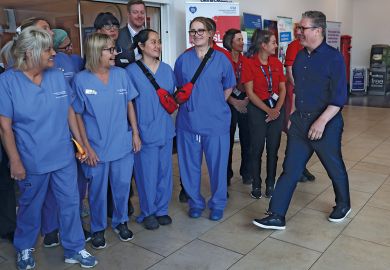There are, unfortunately, millions of people who would benefit from reading this excellent book: I hope that many of them will have the opportunity. I speak with considerable feeling, for my own experience demonstrates the confusion surrounding this mysterious disease - the very existence of which is still denied by some physicians.
In February 1962, I was planning a dive on a wreck containing almost a ton of silver rupees, all dated 1702, which my associates had discovered off the south coast of Ceylon (now Sri Lanka). While shopping in Colombo, buying equipment for the expedition, I misjudged the height of a doorway and crashed into the lintel.
It took me several minutes to recover, and I had a painful scalp wound; but I felt none the worse. I got on my motor scooter, drove three miles home, played several vigorous games of table tennis and ate a hearty dinner - my last for many months.
That night I became violently sick and spent the next couple of days in bed. But, convinced that it was merely something I had eaten (you get used to occasional stomach upsets in the East), I was not particularly worried and never dreamed of calling the doctor. By the time one did arrive on the scene, I was paralysed and could barely breathe.
I have vague memories of being carried to hospital, where I was apparently delirious for several days. (The medical report uses the nasty word "manic", but at the time I thought I was perfectly rational.) A plaster collar fastened round my neck gave the worst nights I have ever endured, for I was convinced that my spine was being slowly bent backwards until it was about to snap. In other interludes, I was dying of thirst while being buried in desiccated dust (I can still taste that dust). When I became aware of my surroundings again, I was about as strong as a two-day-old kitten.
This is scarcely an exaggeration. Though I could just move one arm and one leg, I could do nothing with them. The greatest feat I could achieve after long deliberation and careful planning was a slow roll from my back on to one side. I can remember doing this in order to throw my weight on to the bell-push that summoned the nurse; the tubes of jelly that had once been my fingers were quite unable to overpower the spring that kept the switch from closing.
I think I must have missed an iron lung by the thickness of a nerve fibre. Although I could breathe without much trouble when perfectly relaxed, the slightest exertion left me gasping. I could not speak more than two or three words without panting for breath. Having my face washed was a frightful ordeal; I could barely endure the brief passage of the suffocating sponge over my nose.
After six weeks of being fed and bathed like a baby in a private hospital, I was carried home at just about the time we had planned to leave for the reef. The Great Basses wreck would be undisturbed for 1962, and it seemed most unlikely that it would ever be disturbed by me at any future date. Though I could sit up when propped in a chair, I was stuck there and had to ring a bell for help when I wanted to move. The local doctors - who knew nothing about my cranial impact because I had been unable to tell them - had diagnosed spinal injury, and X-rays had apparently confirmed this. I was told that I would eventually be able to walk again, but any further diving was out of the question.
After a few months of slow recovery, I decided to go to England to prove to my friends and family that I was still alive, as well as to see if there was any medical treatment available there that I could not get in Ceylon. And then the British specialists thoroughly confused the issue - by claiming that my problem was polio, not a spinal injury.
When I returned to Colombo, my own physician flatly disagreed with this expensive Harley Street diagnosis. "It's not polio," he snorted, "look at this X-ray!" As there is nothing a mere patient can do when the experts disagree, there the matter rested until 1986, when I found that I was beginning to walk with difficulty, so I decided to get another check at a famous London hospital.
The result was, to say the least, disturbing. I was told that I was really suffering from motor-neuron disease (Amyotrophic lateral sclerosis, known in the US as Lou Gehrig's disease). Naturally I was somewhat depressed, but did not really believe the diagnosis. Nevertheless, I went back to Sri Lanka and indulged in a frenzy of writing - just in case I had not much time.
In 1988, the combined efforts of my Sri Lankan and American friends (including George Keyworth, President Reagan's science adviser, whom I had recently shown around Sri Lanka) persuaded me to go to the famous Johns Hopkins Medical Center in Baltimore. On my way through London, I had a truly memorable encounter with Stephen Hawking, when I participated in a television discussion with him and Carl Sagan, "God, the Universe and Everything Else". But all the time I was in the studio, I kept thinking as I looked at Stephen: that is the way I will be in a year or two...
I was greatly relieved when I reached Baltimore, the head of neurology, Daniel Drachman, gave me my fourth diagnosis. What I was suffering was not a spinal injury (though I think that may have triggered the later events) or ALS or polio itself - but its newly discovered relative, post-polio syndrome.
This finally, and perhaps none too soon, brings me to Julie Silver's book. Today's post-polio victims can be thankful for one small mercy - the condition can now be diagnosed unambiguously by electrical tests. Some of these are not particularly comfortable - but are well worth enduring so that the correct treatment can be applied.
It is hard to think of any aspect of post-polio syndrome that this book does not cover in a clear and sometimes even entertaining manner. Perhaps the most important chapter is that devoted to designing a safe and comfortable living environment, for one of the greatest dangers that polio survivors risk is that of accidental falls - as their bones are usually weakened, this may result in serious injuries and even death. Simple exercises are described that can be of value to survivors, as long as they remember not to overdo it. It is sometimes a problem choosing the fine line between "use it or lose it", or "use it and lose it".
This book's only limitation for UK readers is the that most of its references are to US institutions and publications. However, they will all have their equivalents in Britain and can be contacted through the British Polio Fellowship.
Although I was still rather weak, I did get back to the 1702 treasure wreck in 1963, though it was probably not a very sensible thing to do. I was nearly sucked into a cave by a strong underwater current, and was barely able to fight my way out. (For details, see The Treasure of the Great Reef .) Now that I am completely "wheelchaired", I wish I had more time to spend in the delightful zero-gravity environment of the sea - or better still, in orbit. As long ago as 1942, Robert Heinlein wrote a famous short story "Waldo", describing how a crippled scientist was able to function in a space station. Well, last month, I had a half-serious invitation from the organisation that put Dennis Tito into orbit. They now have an extra seat. Would I like to go along?
I'm thinking it over...
Sir Arthur C. Clarke lives in Sri Lanka.
British Polio Fellowship
Unit A, Eagle Office Centre
The Runway
South Ruislip
Middlesex
HA4 6SE
Tel: 020 8842 1898
email: info@britishpolio.org
or www.britishpolio.org
Post-Polio Syndrome: A Guide for Polio Survivors and their Families
Author - Julie K. Silver
ISBN - 0 300 08807 8
Publisher - Yale University Press
Price - £19.95
Pages - 304
Register to continue
Why register?
- Registration is free and only takes a moment
- Once registered, you can read 3 articles a month
- Sign up for our newsletter
Subscribe
Or subscribe for unlimited access to:
- Unlimited access to news, views, insights & reviews
- Digital editions
- Digital access to THE’s university and college rankings analysis
Already registered or a current subscriber? Login



